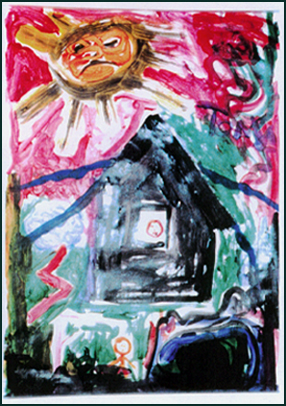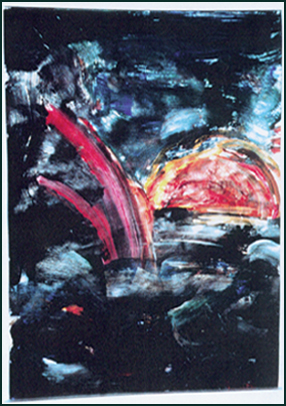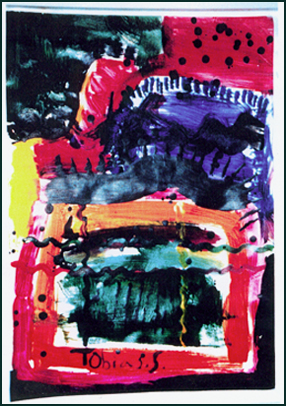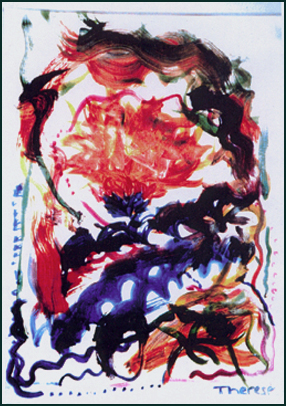Duo Gelland - violinists Cecilia and Martin Gelland, meeting children and teens
Duo Gelland: The quality of the dialogue in the classroom depends on the fact that the artistic process encompasses everyone - the children and the artists.
Cecilia and Martin Gelland perform for kids in the classroom since 1994 and treasure these interactive eye level meetings. They play and ask: "What did you hear?" The kids explain, using their own associations and experiences as metaphors, communicating with words, paint, motion, mimic, sounds, gestures. Sometimes a certain moment in the music. is described. The duo eagerly seeks the passage in question. "Did you mean this?" The listening skills and the insight of the young listeners is surprisingly acute and well articulated. There are very serious moments, there is laughter and most of all, there is intense concentration. There is also the realization that everyone hears the music in her/his own way, imbuing in it unique meaning.
The Gellands often bring historic music to the classroom and they always bring new scores, sometimes even un-premiered ones. Their opinion is that the contemporary art music belongs to the young. It speaks about complex structures of the life they just experience, so they have the right to it. At the end of the session everyone in the classroom is invited to join in the creation of a new musical scheme for two violins - perhaps with their own sound participation. The duo calls it "instant composition" - the calling fourth of sounds and sound structures by improvising according to verbal and physical instructions. In this way every classroom visit can end with a premiere.
Cecilia: When the pupils tell us what they hear and experience in the music, we learn more about how the music works, what it does, how one hears it, how the layers of structure in the music cog into each other in multiple ways. The images and metaphors of the young listeners start to inhabit the music. The music becomes more and more vivid, alive, real and connected to life. The minutely differentiated options of interpretation open up even more. It is an artistic process that prolongs and deepens our interpretational work.
Duo Gelland's open method of performing for and interacting with children and teens was further developed during their nine years as artists-in-residence in Strömsund, north Sweden. Thus, in honour of the kids they met there, they call it the Strömsund method. While in Strömsund, their work was studied for eight weeks by music pedagogy doctoral student, Anna Rudroff, from Musikhochschule Leipzig.
During residencies at international music institutions the Gellands frequently lecture about their work with children. Through Musikalliansen in partnership with Akvarellmuséet and Gerlesborg's Art School, they have presented weekend courses to Swedish freelance musicians. They have given recurring college credit courses at Musikhochschule Dresden and Musikhochschule Leipzig. They were invited to share and demonstrate their work at EU conference within Comenius Regio about aesthetical learning processes hosted by Huddinge Kulturskola, Landesschulmusiktag der Landesakademie Berlin - annual congress for all music teachers in Berlin schools, at the symposium "Das Potenzial künstlerischer Lehre" (The Potential of Teaching within the Arts), Leipzig.
Their inner city classroom work in Minneapolis poor districts has been subject to documentation and research by professor, interim dean, School of Music, Scott Lipscomb, over a period of three years.




Gällö Centralskola seventh to ninth grade hear Allan Pettersson, Sonata no. 5. One class at a time enters the auditorium, which is furnished for the occasion with long tables set with plates full of paint, brushes and big white sheets of paper. After a brief introduction Duo Gelland starts playing. The concentration is enormous. Later in silence, the artists walk between the tables and listen to students who wish to talk about the music and the painting.
DG
x